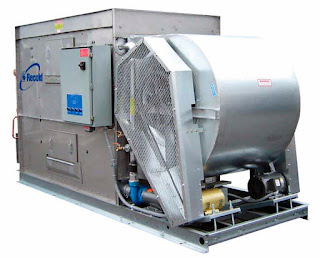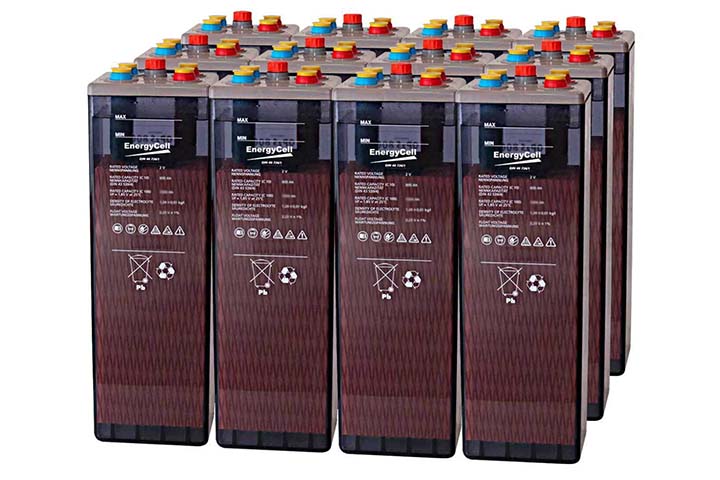What is a condenser? And what are the most popular condensers?
This article is all about heat rejection in the condensers. What is a condenser you ask? I’ll explain your question in this article as well! Then we’ll go deeper into knowing evaporative condenser and water-cooled condenser to help you gain useful information about them. Are you ready to learn? Then continue reading…
A condenser is
a part of air conditioners or heat pumps that should collect or release the
heat. This operation actually depends on the time of the year. The basic parts
used in the heat pump condensers and split air conditioner are the same.
A condenser
coil, fan, different controls, and compressor have been designed inside of a
condenser to achieve the desired outcome. The air is circulated across the coil
with the help of the condenser fan to ease the heat transfer and the compressor
should compress the refrigerant and pump it to the coil in the form of hot gas.
The only difference here is that in the heat pumps, this gas is directly pumped
to the evaporative coil, and the result would be providing heat; whereas, in
the air conditioner, the condenser turns the refrigerant into a warm liquid to
pass through a pipe that reaches the evaporative coil. In this part, it cools
and expands. There’s an incredible article talking about condensers in detail,
you can click here to read it.
Now that you
know the answer to “what is a condenser”, let me introduce Evaporative
condensers to you!
When the
refrigerant’s heat from a refrigeration system is not useable, the evaporative
condensers set foot in the picture. The evaporative condenser is responsible to
eliminate this excess heat by evaporating the water. If you know cooling
towers, you should be familiar with the physical principles of evaporative
condensers too since they are pretty much the same.
In this system,
the coil’s upper collector receives the refrigerant that’s about to be
condensed. Then the evaporation of the water removes the heat that’s in the
coil’s exchange surface.
Keep in mind
that evaporative condenser’s energetic efficiency is considered as one the main
advantages of this system and you should remember that when you want to set up
a refrigeration installation.
One of the few
problems in the evaporative condensers is the escape of water droplets to the
environment which is undesirable. They are called Drift! And there’s a
well-designed unit called drift eliminator to handle this problem which I’ll
explain at the end of this article.
There’s a lot
more about evaporative condensers to learn. Check out this article
that contains useful information and interesting facts about evaporative
condensers.
In the previous
part, we learned about evaporative condensers. Now, I want to introduce
Water-cooled condensers as one of the most famous condenser types to help you
get a better answer to your question which was “what is a condenser”.
This condenser,
too, provides the expected outcome: Heat rejection! The heat in this condenser
is released into the outside environment with the help of water. The heat from
the refrigerant vapor will be transferred into the water that’s inside the
condenser. In this process, the vapor condenses and the heat will be
transferred to the water inside the tube.
Some of the
most popular water-cooled condensers are direct-contact and surface types. You
can calculate the heat rejection of the condenser by calculating an energy
balance on the water stream. You can check out this article to
get more detailed information about water-cooled condensers and learn about its
parts and operation deeper and better.
Now to hold my
promise, let’s learn about drift eliminators that solve one of the problems of
evaporative condensers: Drift!
Also known as
windage, drifts are the water droplets that escape to the outer environment.
Although it has no harm to the environment, it’s still considered as an
undesirable loss of liquid water into the air and carries chemicals and mineral
impurities to the environment.
The drift
eliminator is designed to reduce drift and solve this problem in the best
possible way. It has three types: counter-flow, cross-flow integrated, and
cross-flow non-integrated. They can capture water droplets caught in the air
stream and prevent them from escaping the system. They make the drifts to
change their direction, resulting in the loss of velocity and falling back into
the system. Pretty smart… right? If you are eager to know more about drift
eliminators, you can read this article.
What is a
condenser? I guess you can answer this question easily, now that you’ve read
this article! How about sharing your reading experience with us in the comment
section? And if you have anything to add to this article, feel free to drop a
comment below and share your knowledge will us!
**
Sources:
https://en.wikipedia.org/wiki/Condenser_(heat_transfer)
https://www.lennox.com/buyers-guide/guide-to-hvac/glossary/condenser-coil
https://www.torraval.com/en/evaporative-condenser/
https://www.sciencedirect.com/topics/engineering/water-cooled-condenser
https://www.eurovent-certification.com/en/technical-insight/drift-eliminators
https://www.linquip.com/blog/evaporative-condenser/
https://www.linquip.com/blog/water-cooled-condenser-types-a-go-to-guide/
https://www.linquip.com/blog/drift-eliminator/
https://www.linquip.com/blog/what-is-a-condenser-parts-functions-types/



Comments
Post a Comment